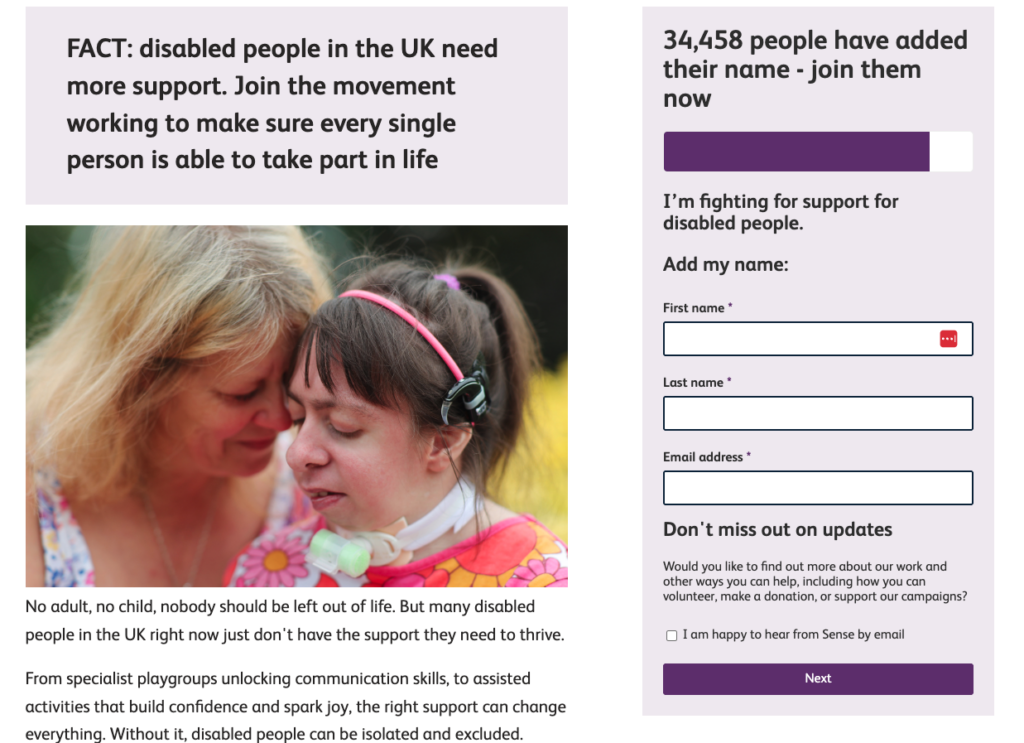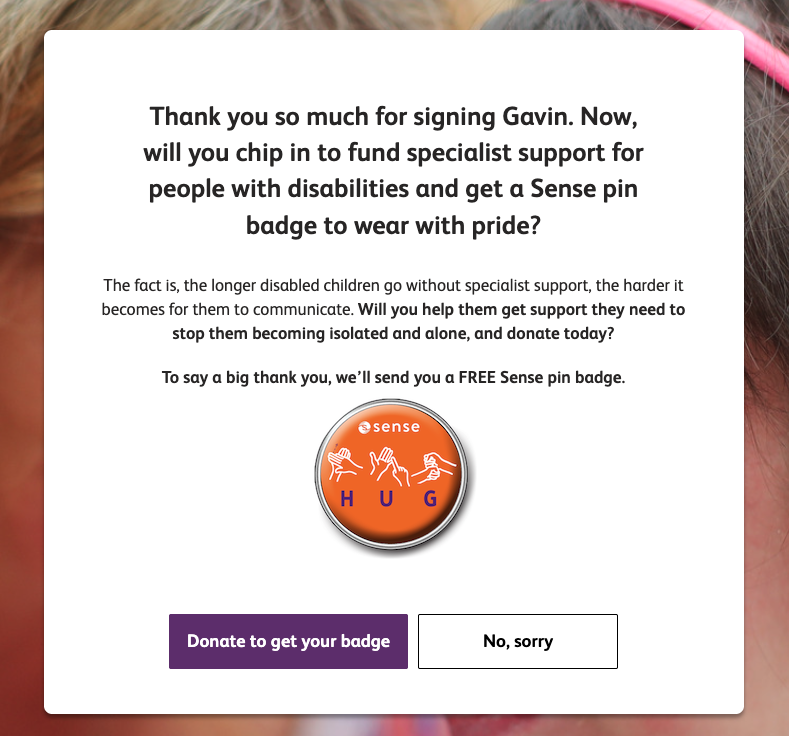Sense has a bold goal: to support ten times more people with complex disabilities by 2026. To make that happen, they need to grow their supporter base – and convert that support into lasting impact.
We set out to recruit over 21,000 new email subscribers and achieve a 1% donation rate, building an always-on acquisition programme that could deliver both reach and revenue. They’d previously struggled to turn new sign-ups into donors — so improving conversions was a key priority.
By taking a fresh, data-led approach we were able to test our way to target-beating conversion rates. We learned from and improved every step of the journey to turn handraisers into donors.
See how we did it
Step 1. Optimised the journey from handraiser to donor
We analysed which handraiser action delivered the best donation rates — and doubled down on what worked. By shifting the focus to single gifts rather than regular giving, we matched the ask to the audience and saw stronger results.

Step 2. Found the right channels to scale
Through rigorous testing across ad platforms, we identified where Sense’s message resonated most — and invested in the channels that delivered the strongest return on investment.
Step 3. Refined the donation ask
By testing different donate tactics— like a pin badge value exchange, a survey before the donate ask and prompt amount testing — we honed in on the messages and tactics that converted at the best rate and gave the highest average amount.

Step 4. Supercharged the supporter journey
We made strategic updates to the email experience, increasing engagement and driving more donations. Every tweak was backed by data — and designed to turn passive interest into active support.
The results
15,000+
new email subscribers
1.43%
donate rate in the daisy chain,
surpassing the 1% target
1.68%
overall donate rate,
demonstrating the success
of the iterative approach
The impact of this programme went far beyond hitting targets. It gave Sense a clearer picture of what motivates their audience — unlocking insights they can use to strengthen future fundraising, grow their community, and get closer to their goal of supporting ten times more people with complex disabilities by 2026.
